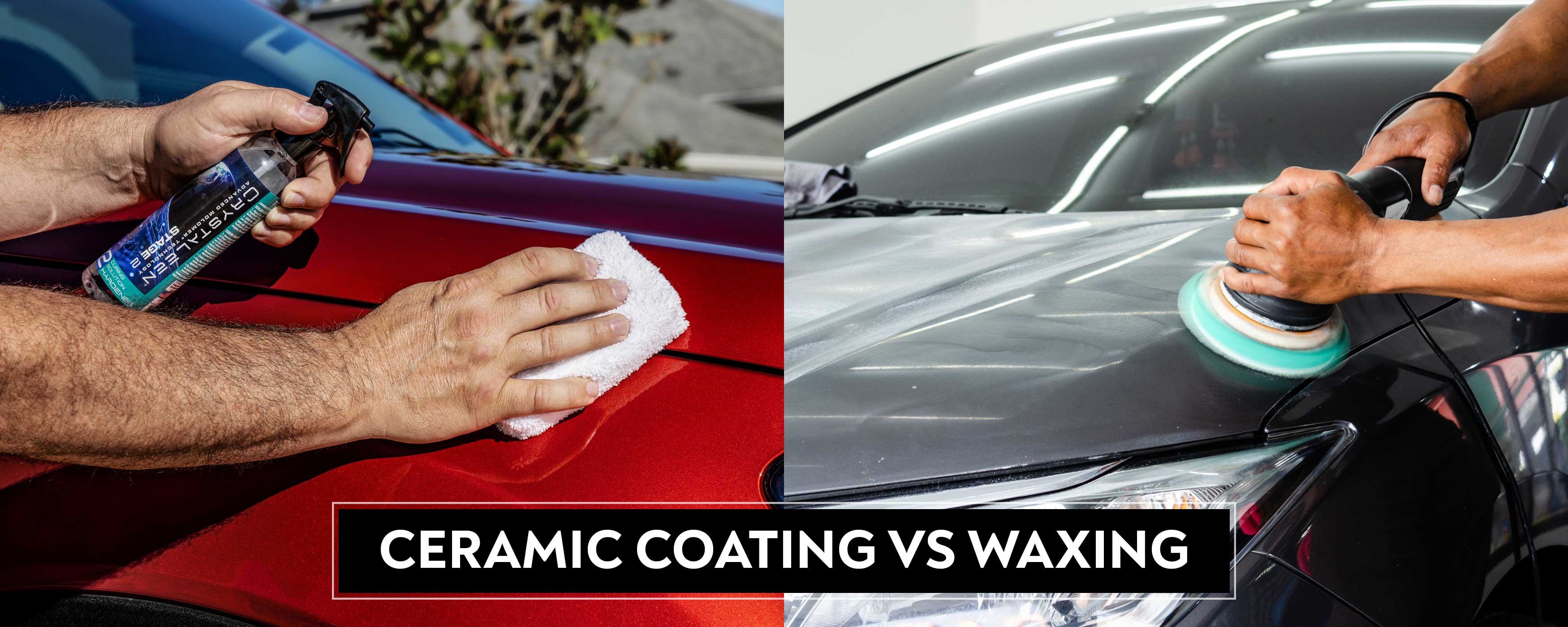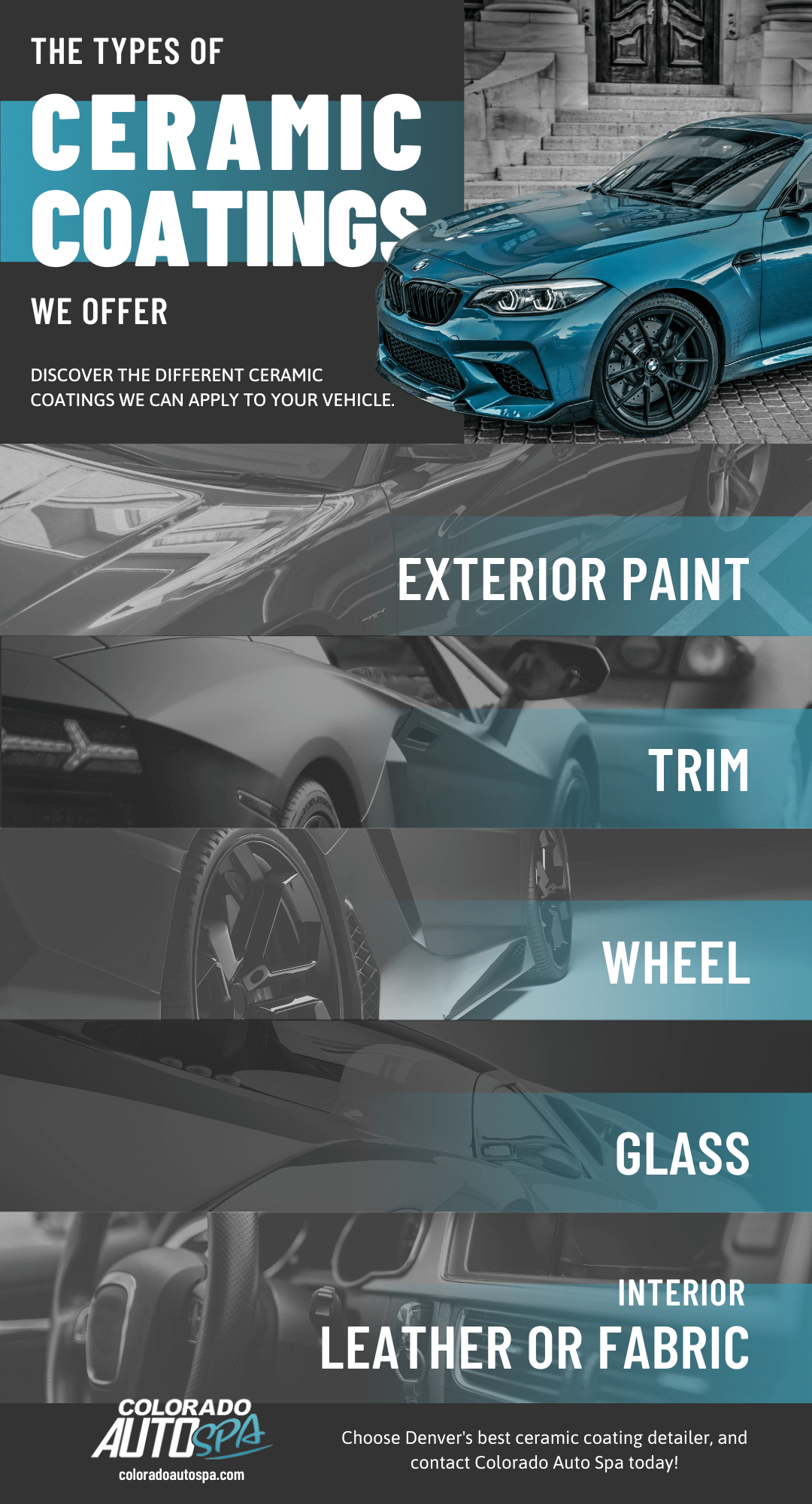Ceramic Covering vs. Traditional Wax: Which Supplies Much Better Long-Term Protection?
The dispute in between ceramic coatings and traditional wax for automobile defense has actually amassed significant interest amongst auto fanatics and specialists alike. While both satisfy of protecting paint, their differences in sturdiness, application, and lasting upkeep prices might affect a customer's selection. Ceramic coatings flaunt premium longevity and resistance to environmental factors, yet the intricacy of their application raises questions regarding ease of access and usefulness. As we explore these contrasting options, it comes to be vital to think about not only the prompt advantages yet likewise the ramifications for vehicle treatment with time.
Review of Ceramic Coating
Ceramic coating has actually acquired substantial popularity among vehicle enthusiasts and detailers alike as a result of its innovative safety qualities. This ingenious technology is designed to develop a resilient, hydrophobic guard over a car's paint surface, significantly boosting its resistance to environmental pollutants such as dust, UV rays, and chemical discolorations. Unlike conventional wax, which gives a short-term layer of defense, ceramic coatings bond at a molecular degree with the paint, using resilient durability-- often prolonging past 2 years with appropriate maintenance.
The application process includes thorough preparation of the vehicle's surface, including cleansing and brightening to guarantee ideal attachment. As soon as used, the covering remedies to create a durable layer that not only includes deepness and gloss to the paint yet additionally streamlines upkeep. With its hydrophobic properties, ceramic finishing enables water and dirt to slide off more easily, decreasing the regularity of washes and reducing the danger of swirl marks.
Additionally, ceramic finishes are available in different formulas, enabling users to choose products tailored to their specific needs and preferences. Generally, ceramic finish stands for a considerable innovation in paint defense modern technology, supplying remarkable performance compared to conventional alternatives.
Review of Traditional Wax
Commonly considered a staple in automotive treatment, wax works as a popular choice for those looking for an uncomplicated approach to boost and safeguard their car's paint - ceramic coating. Automotive wax normally consists of natural ingredients, such as carnauba, or artificial compounds, developed to develop a safety layer on the surface of the paint. This layer not only enhances the lorry's gloss and radiate but also offers a barrier versus environmental contaminants
The application of wax is usually user-friendly, making it accessible for both specialists and DIY fanatics. It can be applied by hand or machine, permitting for versatility in the outlining process. As soon as applied, wax calls for a treating period, after which it sets to develop a safety shell. Wax is likewise known for its capability to ward off water, advertising a beading result that helps in the prevention of water areas and deterioration.
Nonetheless, while wax works for boosting the visual appeal of a vehicle, it is essential to note that the defense it offers may demand extra frequent reapplication compared to alternative items, such as ceramic finishings. On the whole, traditional wax stays a popular choice for those focusing on convenience of usage and prompt visual renovation.
Resilience and Longevity Contrast
While both ceramic layers and traditional wax offer safety benefits for automobile paint, their sturdiness and long life vary considerably. Standard wax, commonly made from natural carnauba or synthetic polymers, generally supplies a protective layer that lasts roughly three to six months. This reasonably brief life-span requires routine reapplication to keep optimum defense.
On the other hand, ceramic finishes are engineered from sophisticated nanotechnology, developing a covalent bond with the paint surface. This results in a robust, hydrophobic layer that can withstand for two to 5 years, relying on the item and environmental problems. The remarkable toughness of ceramic finishings is attributed to their chemical structure, which supplies boosted resistance to scratches, UV rays, and oxidation.

Protection Against Environmental Variables
Safeguarding a vehicle's paint from environmental variables is vital for preserving its appearance and worth over time. Vehicles are frequently exposed to a range of components, including UV rays, bird droppings, tree sap, acid rain, and roadway crud, all of which can jeopardize the honesty of the paintwork.
Ceramic finishes offer a robust protection against these ecological aggressors. Unlike typical wax, which can degrade promptly under UV exposure, ceramic layers form a resilient, hydrophobic layer that withstands the unsafe effects of sunlight and this post toxic wastes. This sophisticated technology creates a chemical bond with the automobile's surface area, offering remarkable defense that lasts for years, even in severe problems.
Traditional wax, while check over here simpler to apply, usually needs frequent reapplication and provides restricted resistance to pollutants and UV rays. Gradually, it can damage down, leaving the paint susceptible to scratches and oxidation. On the other hand, ceramic finishings preserve their protective top qualities much longer, substantially lowering the risk of paint damage and making sure that the automobile maintains its visual allure. As an outcome, ceramic layers are significantly identified as the superior choice for long-term defense versus ecological variables.
Application and Upkeep Distinctions
The approaches of application and subsequent upkeep for ceramic coverings and conventional wax differ dramatically, influencing the overall customer experience and effectiveness of each item. Ceramic finishes need an even more intricate application procedure, typically entailing surface prep work that consists of washing, decontaminating, and polishing the automobile. As soon as the surface is prepared, the ceramic finishing is applied in a controlled atmosphere, often needing professional know-how to ensure appropriate treating and bonding to the paint.

While both items enhance vehicle look, the longer-lasting protection provided by ceramic finishings might validate their first investment, in spite of the more demanding application process. Conversely, standard wax continues to be a preferred selection for those looking for a simpler, albeit short-term, service.

Final Thought
To conclude, ceramic coverings demonstrate significant advantages over standard wax in regards to resilience and environmental management. With a lifespan prolonging 2 to five years and exceptional resistance to UV rays, dirt, and chemical stains, ceramic coverings supply an extra reliable option for long-lasting car upkeep. Although the application procedure might need professional competence, the resulting expense financial savings and minimized frequency of reapplication underscore the worth of ceramic coatings for those seeking optimal lorry security.
The argument between ceramic finishings and traditional wax for lorry security has amassed considerable attention among automotive fanatics and experts alike. Unlike traditional wax, which gives a short-lived layer of security, ceramic coatings bond at a molecular degree with the paint, offering lasting toughness-- often prolonging past two years with try this website proper maintenance.
While both ceramic finishes and traditional wax deal safety advantages for auto paint, their sturdiness and long life differ substantially. For vehicle enthusiasts looking for long-term security, ceramic finishes present a compelling benefit over traditional wax products.
In verdict, ceramic coverings show considerable benefits over traditional wax in terms of sturdiness and ecological security.